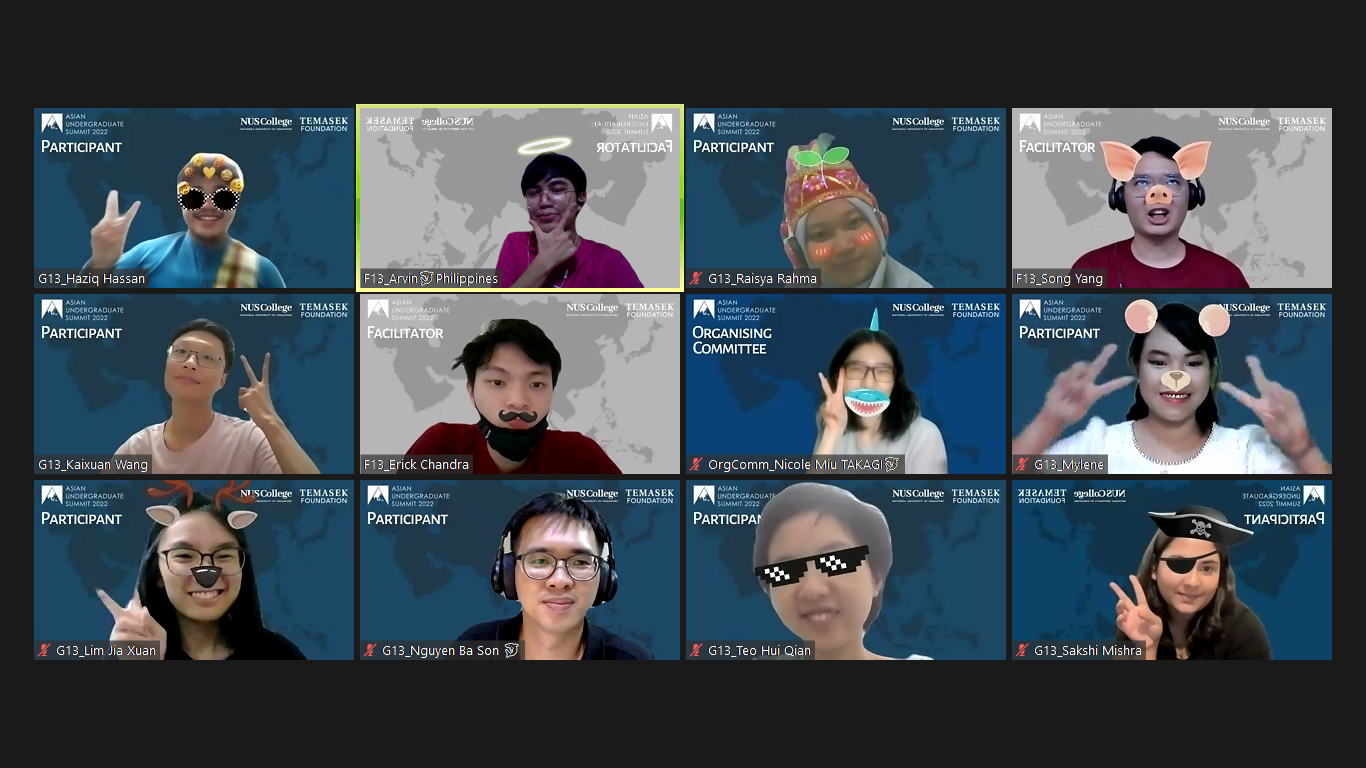Deliverables for AUS 2022
Theme
Leadership in a Complex World: Creating Opportunities in Times of Uncertainty
Problem Statement
Create solutions for the problems of Asia in 2032.
Participants were required to identify current and emerging problems relating to growth in Asia and pick one to focus on. Using the skills they learned from the Futures Thinking Workshops, they came up with possible solutions to deal with the issues in Asia in 2032 (10 years' time).
The deliverables of AUS 2022 are displayed below.
+ Group 1
Topic: Sustainable Urban Planning 2032 in Kuala Lumpur, Malaysia
Group 1’s focus is on improving sustainability, e-commerce, and inclusivity in Kuala Lumpur. The problems that they have identified include an inefficient and unsustainable public transport system and infrastructure, inefficient last-mile delivery process for e-commerce purchases, and a lack of awareness of the need for an inclusive city. They have thus come up with solutions to these 3 problems which addresses both short-term and long-term needs.
For public transport infrastructure, Group 1 aims to first educate the public on global warming and the benefits of public transport, while the government begins their planning of the public transport system. As the system is being constructed, Group 1 suggests rolling out subsidies on public transport, establishing a carbon emission-based taxation system, and providing electric and/or local bicycle stations for last-mile distances. To achieve efficient last-mile delivery, Group 1 plans to use route optimisation software to encourage drivers to go on pre-planned routes, thus decreasing time wasted in congestion. Eventually, they hope to achieve full truck loads by consolidating packages, thereby decreasing the number of delivery vehicles, which, along with their plan to improve highway capacity and connectivity, will greatly help with congestion. Lastly, Group 1 also pushes for a more inclusivity society, recommending that Kuala Lumpur be more inclusive and diverse. They aim to do so via awareness and education, continuous dialogues and discourse, as well as providing more studies, publications, and journals on LGBTQ+ people in society.
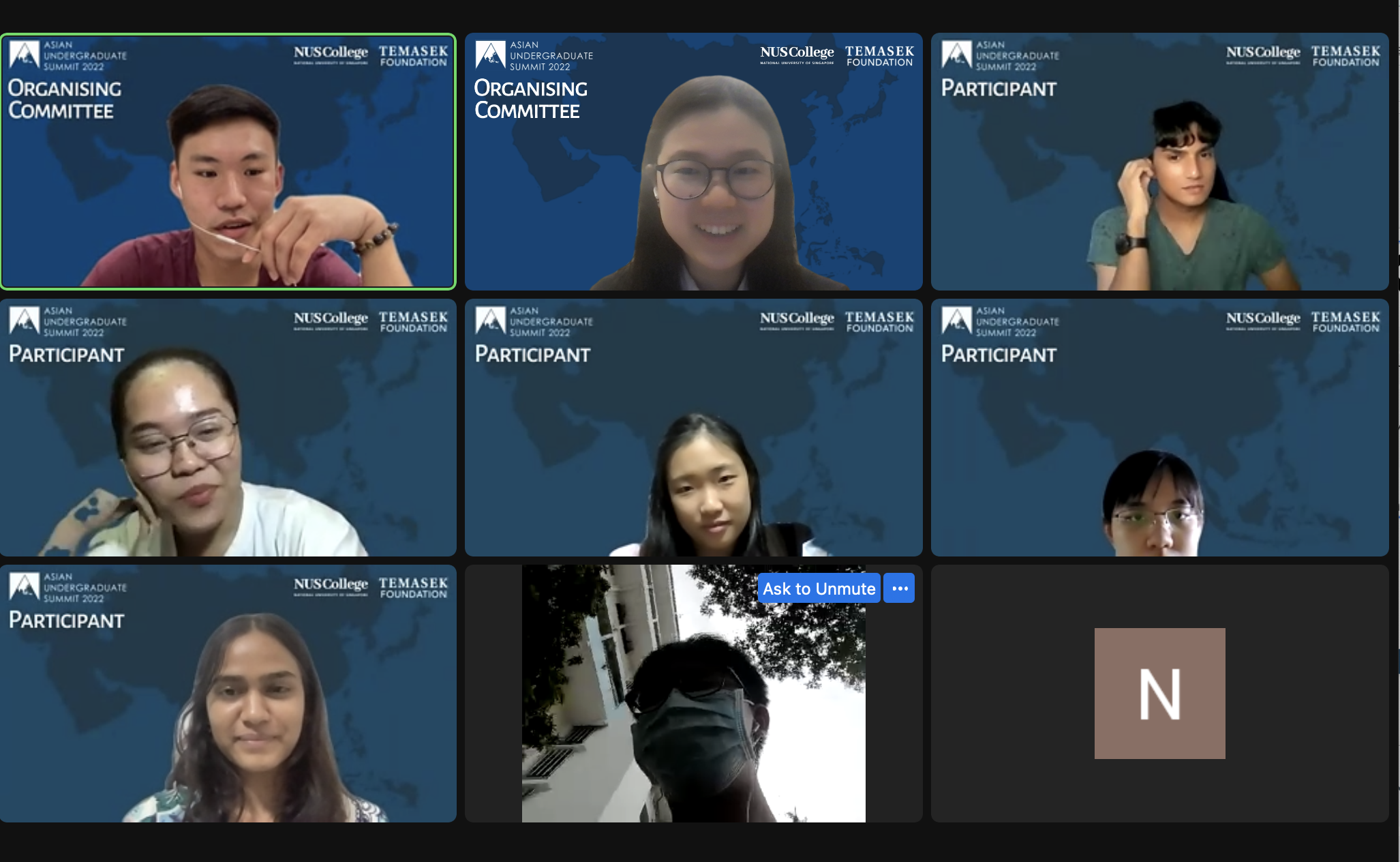
+ Group 2
Group 2’s focus is on the long-term planning and advancement of Binhai Eco-City in Tianjin, China. First conceptualised as a bilateral project between the governments of China and Singapore. The Sino-Singapore Tianjin Eco-city had plans to become a co-developing liveable, sustainable and sophisticated living environment for a projected 350,000 people. However, upon its completion, the project soon faced a severe underpopulation, characterised by its far location from Tianjin’s urban areas and a lack of community.
Their solution was in three-folds. Establishing urban planning expertise and collaboration, improving self-sustenance and reliance within the eco-city, and attracting population as well as development. The first solution involves holding biannual conversations between locals and the government, with the purpose of addressing residents’ living needs. The eco-city project is in need of redistribution of authority between the local community and the state government, as its development did not generate enough demand among the buyers. Secondly, the eco-city will be expanding their niche in Water Treatment Facilities, creating employment and promoting water security. Lastly, to attract residents and long-term development, the eco-city will organise more community events to improve community engagement and liveability of the city.
+ Group 3
Group 3’s presentation was an upgraded New Delhi community through a government managed ecopark village solution. The goal was to alleviate the air pollution caused by lack of greenery and to align community development with the digital India strategy. Since air pollution is also caused by the frequent crop burning in India, we decided to use the crops for disposal as fertilizers for the entire ecopark instead. Air pollution is also heavily caused by vehicular emission; thus, we decided to make New Delhi more commuter-friendly. We decided to build a water purification system to turn water from the polluted river to drinkable water.
The main features hinge on upgrading the existing Ecopark in New Delhi to introduce more community engagement so that the community will be empowered to make a difference. In our proposal, the ecopark will be managed by residents living in the vicinity to oversee the housekeeping and cleanliness of the park - making it a residential ecopark - bringing green spaces into residential areas and residential areas into green spaces. The park will be divided into 3 zones - the green zone, the social zone and the economic zone. Riding on the organic produce wave and the growing popularity of gardening that the pandemic has brought in India, the green zone houses a community garden where residents can cultivate their own crops and produce. Through collaboration with NGOs, we also encourage tree planting and give residents an opportunity to be actively involved in the park. Through the growing of produce, it also provides residents with a space for developing food solutions within the vicinity. This ties in with the economic zone, an area for start-ups and food truck initiatives to encourage economic activity within the area that can generate revenue to ease the financial management of the park. It will also include a “farmers’ market'' where residents can sell their organic produce and crops. The social area is a place that will include a multipurpose hall and an amphitheater for community based activities and the celebration of festivals or organization of any community fairs.
In 5 to 10 years time, the group hopes to build more eco parks around New Delhi, to incorporate more technology, and to generate funds for the development and sustenance of the system. Further into the future, through government partnership and in partial exchange for helping maintain the park, the group hopes to provide housing for the park workers. This proposal aims to replace slums and provide a basic housing area within the park for people who were displaced from these slums. All in all, this solution centers on a bottom-up approach to empower and involve the community to make their own green spaces liveable and lively.
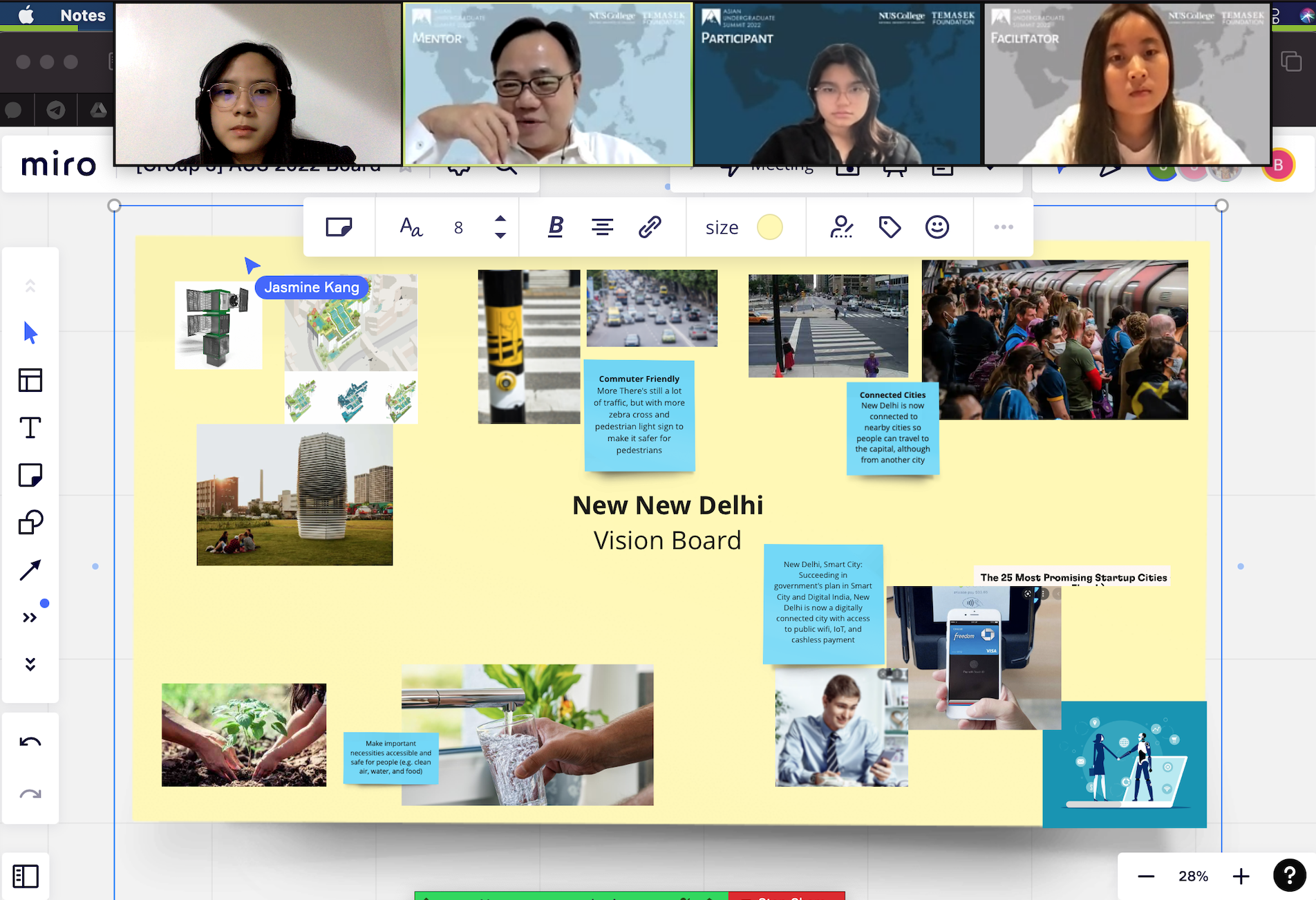
+ Group 4
As a coastal city with a booming tourism sector, Group 4 finds it essential for Danang, Vietnam, to become a carbon-negative smart city by 2050 to ensure its sustainability. At present, highly pollutive energy production and high diesel car and motorbike ownership are significant contributors to carbon emissions. In addition, an inefficient and unreliable digital infrastructure in the city is a major factor constraining structural transformation, leading to poor management of resources and hindering the city's transition into a smart, green, and sustainable city.
Group 4 proposes innovative solutions to these three identified problems. First, the team suggests a reform strategy for the energy sector in Danang. Most notably, they present a fresh approach - for the city to expand nuclear power to boost reliable and clean energy production. Nuclear power will not only provide a steady supply of energy and mitigate Danang's present energy shortage but could also be highly viable for Danang due to its safe geographical location away from excessive tectonic movements.
High diesel car and motorbike ownership is another critical contributor to Danang's carbon emissions, impeding the city's progression into a green city. Group 4 offers a comprehensible, multi-pronged green transport solution for Danang, including economic policies to encourage electric vehicles and the expansion of complementary infrastructures, such as charging points and digitalisation of road services in the long term.
To actualise the vision of a carbon-negative city, it is also crucial to introduce carbon removal approaches for Danang to achieve net negative emissions. Group 4 proposes an extensive planting of mangroves on the coastal island, which not only act as natural carbon capture and sequestration agents but would also serve as a good coastal defence. The latter benefit is extremely valuable as Danang becomes increasingly susceptible to coastal erosion in the face of worsening climate change.

+ Group 5
Group 5 presented their vision of tapping onto AI and green energy technology in 2035 Singapore. They projected benefits of both technology in enabling Singaporeans to "age in place", where medicine is drone-delivered and chronic medical conditions are diagnosed early in children. A 4-day work week facilitated by robotic automation is also adopted to enhance mental well-being and make time for other activities, such as vertical farming. Vertical farms integrated into apartment blocks are also powerhouses for electricity; while grandparents tend to automatically farmed crops recreationally, the grandchildren play on piezoelectric mat hopscotches and kinetic swings. While these innovations have been exhibited occasionally in certain countries, Group 5 envisions them to be adopted more widely in future Singapore, such that everyday habits can contribute towards building a more sustainable future.

+ Group 6
Topic: Reforming the Transport System in Surabaya, Indonesia
Group 6’s focus is on reducing traffic congestion and improving the Angkutan Kota (Angkot) mode of transportation, which is prevalent but not reliable. Angkot drivers currently pick up and drop off passengers anywhere along the road and there is little coordination. Group 6’s solution involves a mobile application for Angkot, named Kot-To-Go, as well as better city planning from the government.
Kot-To-Go is a mobile application that aims to make Angkot more convenient, accessible, and affordable. It seamlessly connects drivers and passengers via designated pickup points, and also groups consumers together. By doing so, drivers can pick up and send more passengers during each trip, allowing for greater efficiency and reducing the unsystematic drop-offs they have to make along roads, thereby reducing traffic congestion. In addition, for drivers, it also gives real-time traffic updates and enrols them into a mandatory safety driving course. To ease the inertia of transitioning to this application, Group 6 also suggests education programmes that will help the public get to know the application better. The application will eventually leverage on digital analytics tools and diversify their services to include other public transportation modes.
For city planning, Group 6’s solution is to build an integrated transport system by encouraging the public to switch to public transport (via various taxes, subsidies, and rebates), enhancing road infrastructure (by redesigning roads and having designated lanes to redirect traffic from city centre to the port), and having an integrated MRT system with different combinations of public transport from walking, cycling and electric vehicles such as cars and buses that runs on solar energy. These ideas, implemented together, will lead to cheaper, accessible, and faster commutes. To also tackle the problem of emissions, electric vehicles will also be part of the switch in the future for private vehicles that remain on the roads for a greener mode of transport. Altogether, the solutions also improve air quality, and the wellbeing of the people.
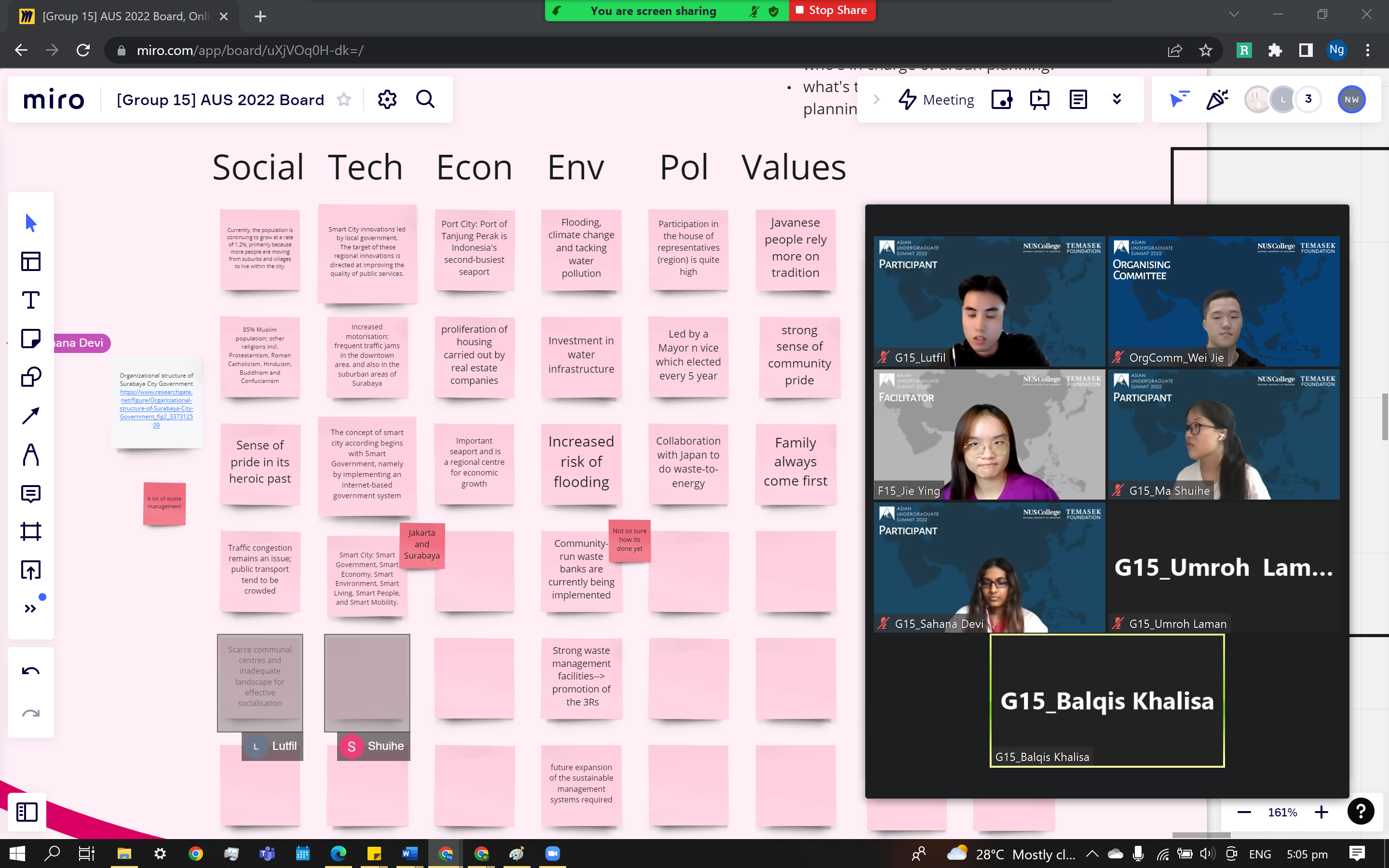
+ Group 7
Group 7’s focus is on Jakarta’s poor flood mitigation caused by monsoon rain and poor water drainage system. The two solutions that they proposed are to implement infrastructures that counters the flood’s effects on the daily lives of the people while repairing the living environment in the city.
Group 7’s proposed solution is to increase the planting of mangroves around the coastal areas of Jakarta to mitigate the floods. As mangroves reduce wave energy and storm surges through vertical accretion, it decreases flood damage to the houses of the people. In addition, a second water system needs to be build to drain away water from heavy rainfall or rise of sea-levels, in which the water collected would also be filtered so that the city has an additional water resource.
However, Group 7 has identified 2 challenges to these solutions, which are: locals might disapprove of the infrastructures as they feel it might affect their livelihood, political resistance and the issue of sustainability of the infrastructures. Therefore to combat these challenges, Group 7 proposed an education and grassroots campaign to get locals involved in the planting of mangroves to allow them to understand the economic benefits of mangroves as well as to educate them on water disposal habit. Additionally, the local authorities have to get involved in these solutions as these are infrastructures that will change their daily lives. The votes of the people will appeal to the local authorities to invest in the two solutions.

+ Group 8
Group 8 tackles the sustainable urban development of Hangzhou, China, particularly focusing on the future of Hangzhou’s transport, technology and cultural heritage. Their goal is to build a 2032 Hangzhou that is one of the top smart cities in the world famed for having high air quality and rich cultural heritage.
Using a three-pronged approach, the group first aimed to increase the air quality of Hangzhou by increasing the uptake of green transport, particularly of air taxis and all-electric buses, as well as by implementing day-off system for passenger cars. Next, in order to achieve the goal of preserving and sharing Hangzhou’s rich cultural heritage, the group proposes building important cultural infrastructure such as the Technoculture Hub. This project, in light of the recent Covid-19 pandemic that restricted overseas travel, integrates advanced technology into the tourism industry by building Virtual Reality Hubs in different countries so as to bring the tourism experience of Hangzhou to those outside Hangzhou without them having to step foot into the city. Finally, to integrate the two aforementioned goals with the last goal of making Hangzhou one of the top smart cities in the world, the group proposes to build a digital twin city, in close partnership with key stakeholders such as research universities and other countries. Hangzhou's digital twin city is thereby used to test and improve on all future technological systems in Hangzhou.

+ Group 9
Group 9 decided to tackle the issues faced by Beijing, a metropolis that is not only China's capital city, but also a microcosm of the changes China has been undergoing over the past decades -- rural-to-urban migration, expanding cities, technological advancements, increasing pollution, rising inequality etc. Our team first explored the multiple faceted issues faced by Beijing -- increasing congregation of rural migrants without proper housing and fair opportunities, soaring housing prices that are becoming unaffordable for ordinary citizens, increased pollution due to COVID-19 lockdown and frequent testings, rising gender equality, as well as the lack of sustainable urban planning and green spaces in Beijing.
To make the issues more accessible for solving, our group has decided to cluster them into four primary areas: Political, Socioeconomic, Gender and Environmental/ Sustainability. Upon greater research into the feasibility of our solutions as well as China's current socio-political climate, our team has decided to orient our solutions to tackling improving sustainability and better integration of the migrant population into Beijing's society. In terms of sustainability, we proposed 1. communal gardening to increase green areas and foster community building in the process, 2. better planning of roads and infrastructure and the transition to electric vehicles to reduce congestion and greenhouse gas pollution 3. Shutting down pollution-heavy factories. On the aspect of societal inclusivity, we would like to bring forth 1. the gradual abolition of the Hukou system, 2. granting more opportunities to migrants' children in education, 3. stronger and more sustained advocacy from civil society organisations to gradually foster a mentality of inclusivity among residents of Beijing towards migrants.
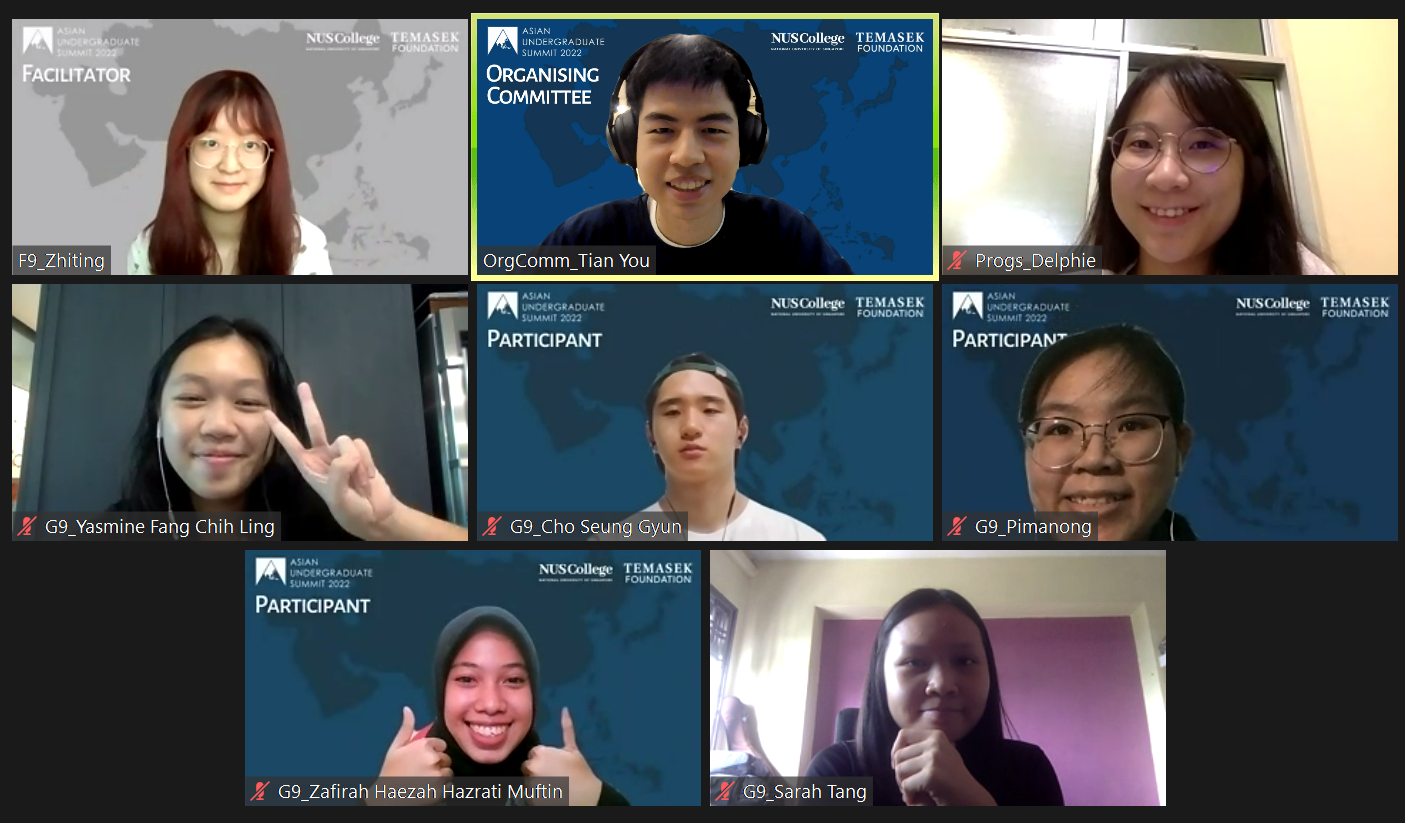
+ Group 10
Group 10 decided to focus on Sustainable Urban Planning using New Delhi, the capital of India, as an example. The group identified the central challenges to sustainable living in Delhi, from economic, social, environmental, and cultural angles, to be the high pollution rate (especially, air pollution), high population with poor public transportation infrastructure and connectivity, and poor housing conditions for the socioeconomically disadvantaged. The three key challenges were all discussed in detail during the course of event, and the central idea was to identify a solution that shall be relevant to all three causes and would be accepted by the government in Delhi. For these reasons, the group chose to emphasize on the transition from oil-based public buses to Hydrogen fuel buses.
The primary emphasis was on accelerating, facilitating and improving the sustainability of this transition, which is already underway in Delhi. The superior performance of these buses in terms of the energy, the consequences of reduced oil-dependency both environmentally and economically, the reduction in harmful byproducts of hydrogen-fuel engines which improves the air quality, the possibility of using the old public bus infrastructure (metals and other materials) in building public housing to address both waste management and the housing crisis, and the overall improvement in public transportation (connectivity) were the highlights of the discussion. The team also explored the nuances of obtaining the funds for such a shift through public-private partnership, reaching out to NGOs, international investment and crowd-sourcing.
Having identified the central challenges that such a transition might pose and their possible solutions, the group presented the specifics of their approach in the form of a table spanning across different time periods to highlight the changes in different indices of sustainability. In addition to this, the team also listed certain measures that, if implemented, would promote the cause of reduced pollution(air) and improved living conditions in Delhi. Finally, they explored how their vision and a Hydrogen-fuel based approach to transportation may be extended to other areas as well to make life in the city more sustainable.
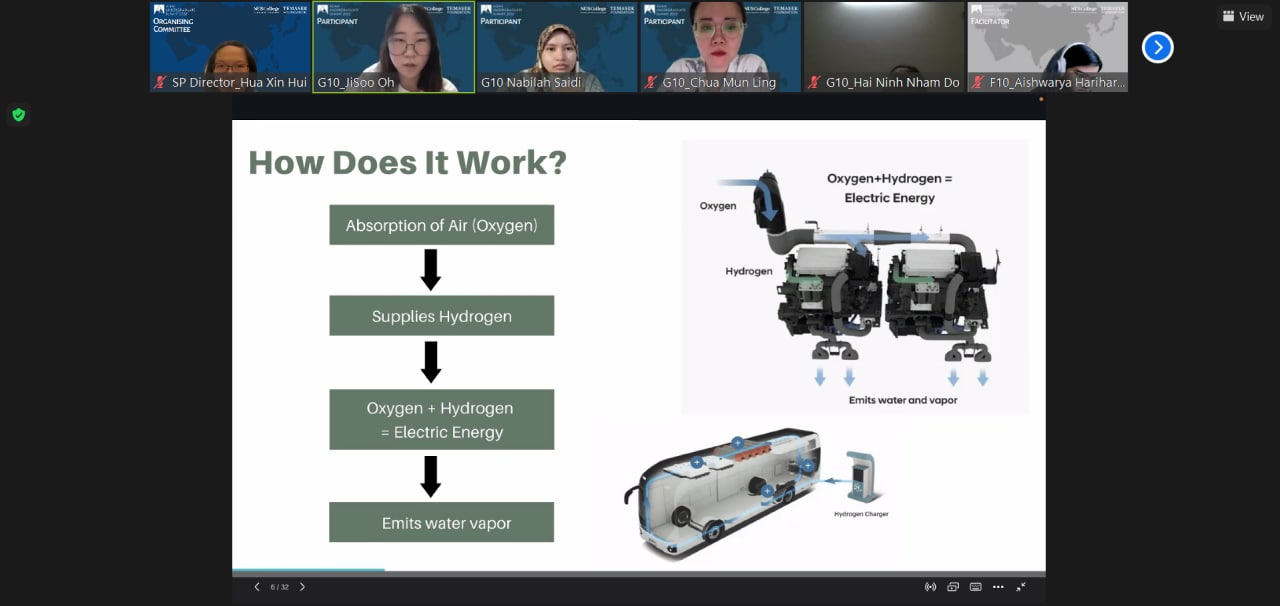
+ Group 11
Topic: 2032 Vision for Sustainable Urban Planning in the slums of Mumbai, India
Group 11’s focus is on poor flood mitigation, plastic pollution, and inefficient wastewater treatment. Their solutions for these issues aims to leverage on both social and environmental aspects, featuring 3 steps that build on each other: bridging the knowledge gap (by reaching out to the international community for past solutions that have worked), collaboration of stakeholders (e.g. international and public consultants, citizens), and better drainage and planning.
To combat poor flood mitigation, Group 11’s first step is to accelerate the construction of the stormwater disposal system, along with introducing regular checks on it. Thereafter, they suggest further better planning of the drainage system, as well as the installation of pumps. For plastic pollution, Group 11’s solution is to legalise and officiate river clean-up as a job, providing an area of responsibility that is under each worker’s care. This allows workers to have more regular income rather than earning on an ad hoc basis. Furthermore, Group 11 suggests educating them of the safety risks as well as raising awareness and understanding of their role amongst the wider community. Lastly, to improve wastewater treatment, Group 11 seeks to accelerate the pace of construction of new sewage lines, and update them through collaboration. They also plan to decentralise wastewater treatment by introducing home-based treatment as an alternative, thus allowing those from more rural areas to have access to clean water. Lastly, they hope to tap into the circular economy through conversion of waste into resources, such as how faecal sludge is treated and converted into cooking fuel and compost in Devanahalli.
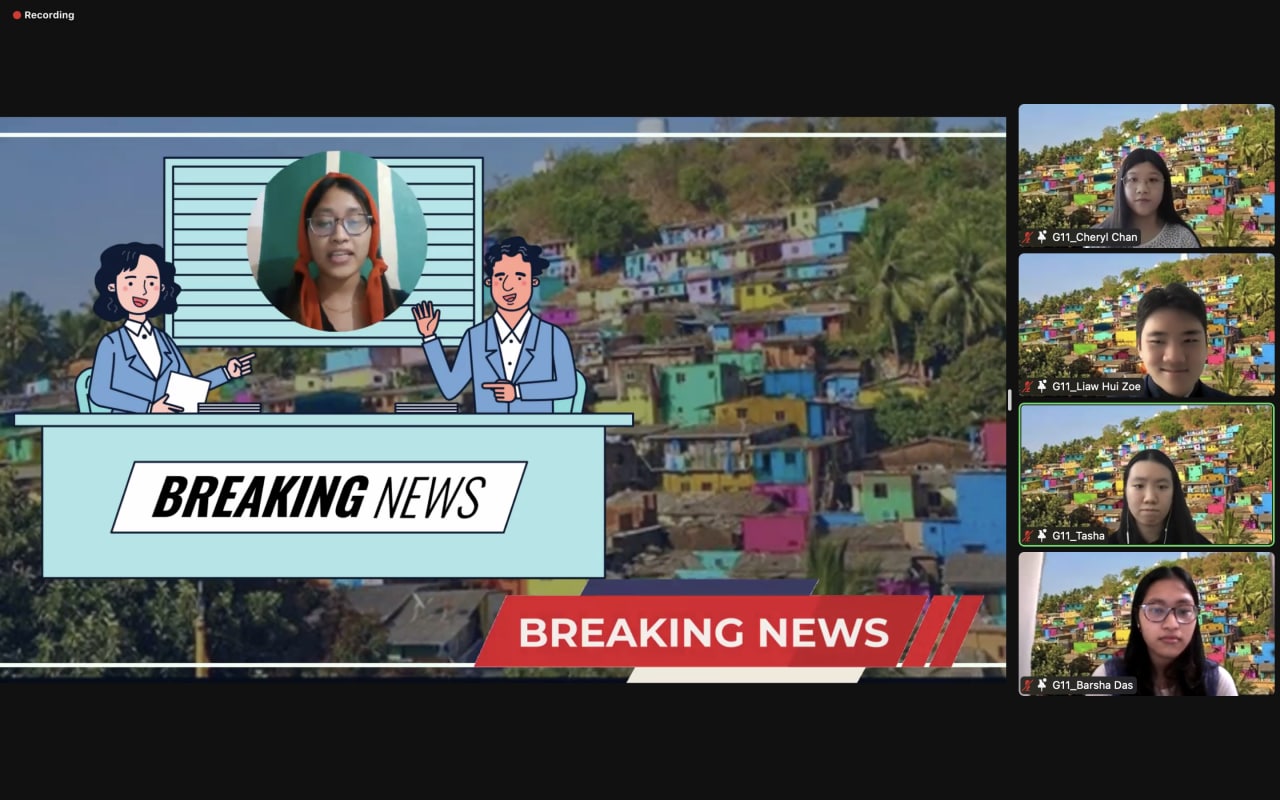
+ Group 12
Group 12's discussion on the city of Mumbai calls for greater public-private people partnership to bridge the deep socio-economic divides and transition towards climate resilience.
The group envisions the creation of special economic zones with tax rebates, subsidised electricity, and lowered interest rates to attract multinational companies to create jobs for locals, who are given training to build skills to seize these opportunities. Apart from jobs, this vision involves making basic amenities available to all - subsidising schools and healthcare centres for low-income groups, while increasing upgrading internet infrastructure. Once access to basic amenities is stable, locals, corporations and grassroot organisations can be given the necessary training and incentives to get clean energy jobs and adopt renewable energy sources as part of their lifestyle to combat climate change. Complementing this is stricter enforcement and penalties on environmental regulations, expanding the resilience of drainage systems city wide, as well as building multi-use green spaces in residential areas to make for a greener city.

+ Group 13
Group 13 proposes solutions in the span of 10 years until 2032 to cater 3 different problems in Manila that consists of revolutionising transportation system, water resource management, and slum housing areas
To accommodate better transportation system, in the next 10 years The LTO can have designated lanes for corporate, public and school buses. These express lanes cut down on the traveling time for commuters and students. In the next 5 years, they will make bus and train timings more predictable and punctual by improving the transportation schedule and system masterplan so that commuters can better plan their trips. This solution is considered more effective than building more roads and help prevents private vehicles in long term. In the next year, they plan to reduce the need for people to commute by urging company to adopt hybrid work.
To solve waste management problem, in the next year they will focus more on preventive action to create a system in every neighbourhood to schedule river cleaning scheme. In the next 5 years, they will invest on machine learning technology to create integrated Information Management System for Coastal and Marine Environment (IIMS) and monitoring lake/river. In the next 10 years, they will work nano-bubbling technology that improves the efficiency of filtering water in lake/river.
To overcome housing in slum areas, the government will train a group of capable people to grow bamboos, which is an affordable and sustainable material, as well as train them to build houses. In the next 5 years, they can design and build their own houses or even offer their service to other clients, which also means create more job opportunities. In the next 10 years, they target the new and ubiquitous sustainable housing areas as future tourist attraction in Manila.
